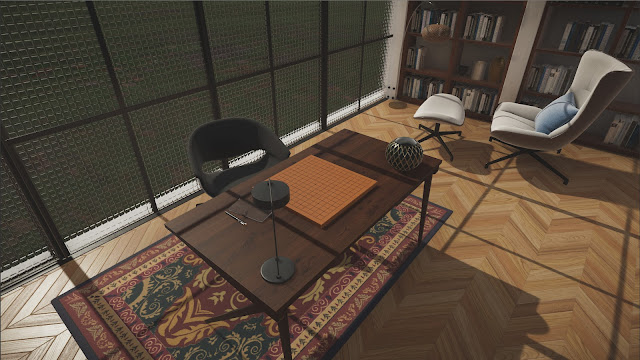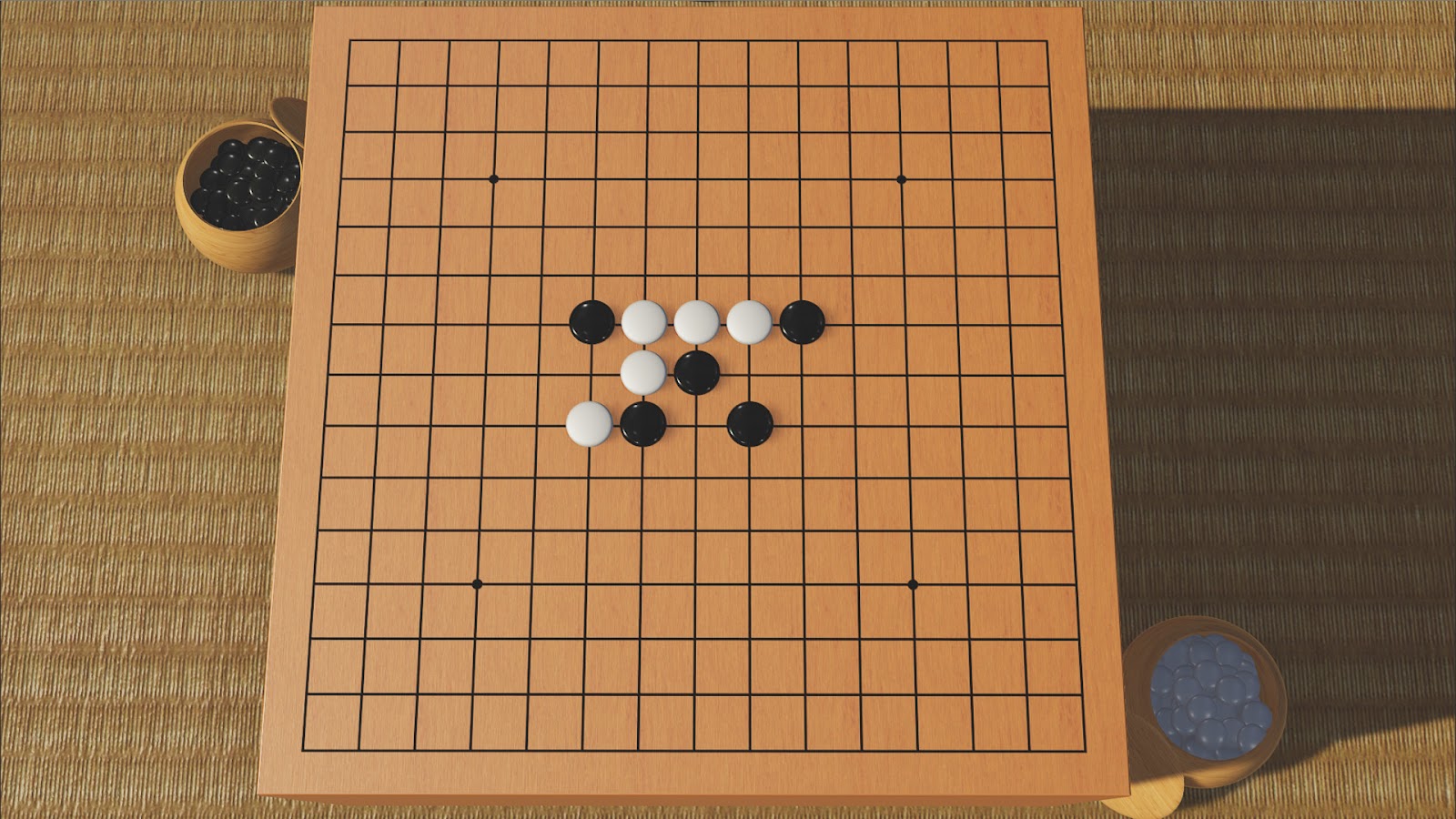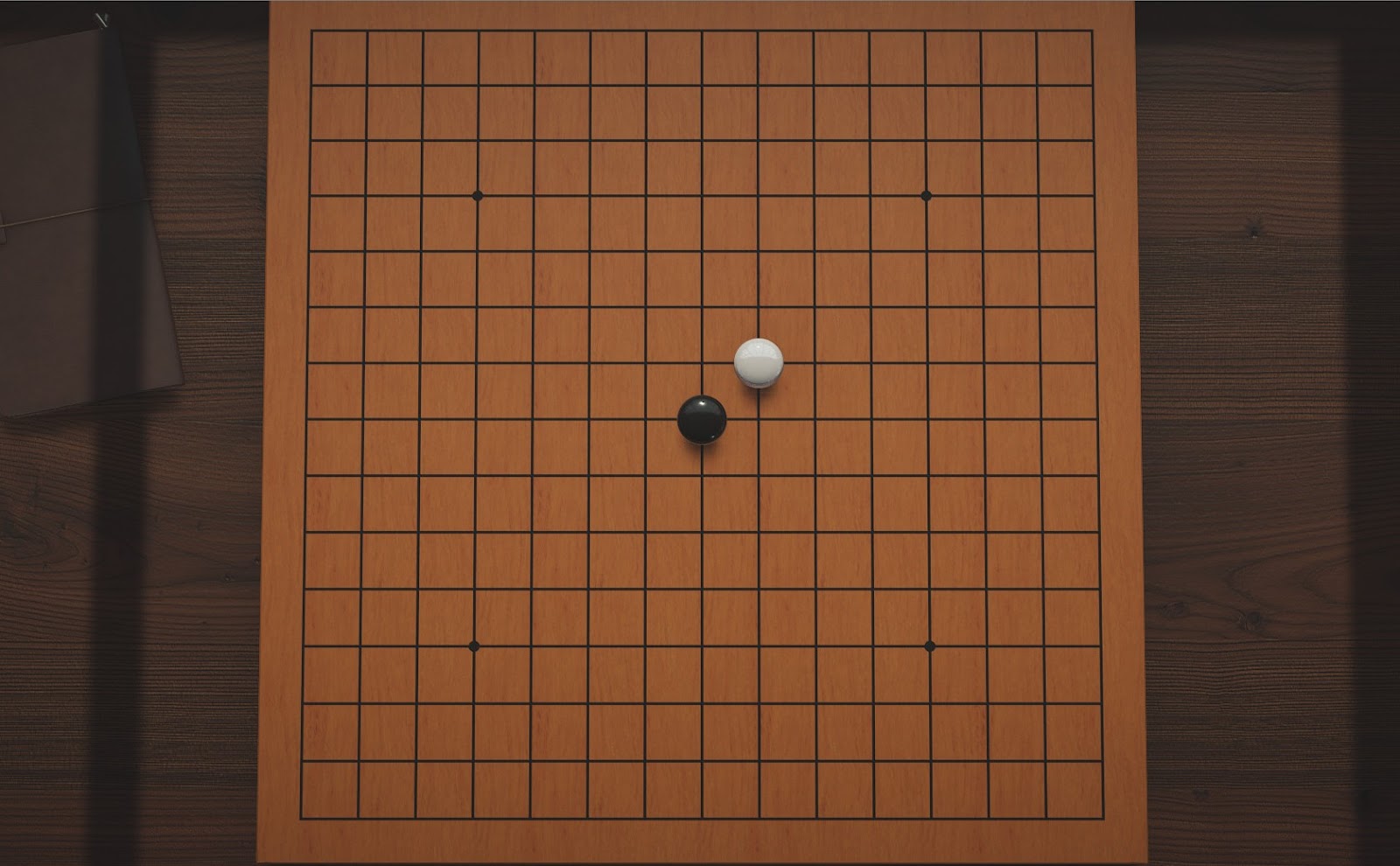With Gomoku Let’s Go, we have another classic and revered board game that can now be played on Switch. In one way or another you can now play Chess, Shogi, Go, Backgammon and Gomoku on the console, and I would argue that those five games are close to the canon when it comes to classic serious board games (it’s entirely my own list so don’t take that as gospel, but it is how I think of these things). Unfortunately Gomoku Let’s Go is a very shaky adaptation of the game, and I don’t think fans of it are going to appreciate this one.
Gomoku is a really simple game. It is played on a Go board, and uses Go pieces. Unlike Go, where the goal is to capture territory (and is overwhelmingly complex in terms of the number of moves and strategies), Gomoku sets players the goal of forming a line of five pieces on the board, placing them one at a time. Naturally the oppontent needs to try and block you from doing so, while forming their own lines. It’s an elegant game that players can learn in seconds and, while it might not be quite of the complexity of a Shogi, Chess or Go, there’s still more than enough abstract strategy in there to separate people who know what they’re doing from rank beginners.
The problem that this game faces is that whoever goes first has a massive, proven advantage. Before rules were introducted to handicap the player going first, the win rate at the world championships was over 60 per cent for the person that went first, and in the context of these things, that represents an advantage that makes the game fundamentally unfair. In fact, the base game is so fundamentally unbalanced that it has actually been solved (i.e. it’s possible to predict the result of the game if both players play perfectly from the opening move). Chess and Go, by contrast, despite having been given massive amounts more attention, have yet to be properly solved.

In acknowledging this, a newer version of Gomoku was developed, called Renju, which prevents the player who is going first from making a couple of moves that are particularly difficult for the player going second to deflect from the position of disadvantage. This version of Gomoku has not being solved and it is possible to play with those rules in Gomoku Let’s Go. However, the big problem with this game is that there’s a further rule implemented in tournament play, which gives the player going second a couple of differnet options a few moves in, including to swap thir role with the other player (i.e. so they can be player 1). With this (Swap2) rule in place the win ratio at the world champships drops to 52 per cent in favour of the person going first, and this is now considered the way to play the game seriously. Unless I’ve missed an option buried somewhere, Swap2 rules aren’t available in the game, and that’s an unforgivable oversight.
As is the lack of online play. Yes, you can play against a range of AI (and the algorithm can be challenging) and there are puzzle-like challenges, a tutorial and the ability to play locally. These are all good features that a good digital adaptation of these kinds of board games should have. But online play is also essential for any effort that’s throwing around ELO rankings and asking that you take it seriously as an adaptation. Just last week there was another classic board game adaptation, Go Minimal, released on Switch, and it exclusively featuree local and online play. No AI. No tutorials. Nothing but the ability to play a game of Go with a friend locally, or someone online (hense the “Minimal” in the title). That is a vastly better way to approach these things if you’re a developer with a micro-budget to work with, because these games are fundamentally cerebral, multiplayer, competitive games and no AI, no matter how good, is a substitute for a human player.
Gomoku Let’s Go does look the part, with three different locations to play at (and those locations are exactly the kind of environments you would expect to find a Go board). The pieces look nice on the board too, and the ambient music in the background is pleasant and relaxing. It’s clear that the developer wasn’t working on the kind of budget that the Pure Chess people had to play with, but then Gomoku’s biggest market is places like Estonia (seriously they love the game there). We’re talking about very different scales of global following here.

I’m sadly torn on Gomoku. I love that we have a serious take on a great game on Nintendo Switch, but the lack of online play defies all logic. If you’ve been dying to learn Gomoku, then this will get you going (aside from the missing application of a critical rule). Otherwise, though, anyone interested enough in Gomoku to consider a video game adaptation surely has a board of their own for local play, and the game’s utility as a training tool is hindered by how few opportunities most of us will ever have to want to play the game seriously enough to train. The application itself is presented lovingly, but I just don’t see the audience here.









